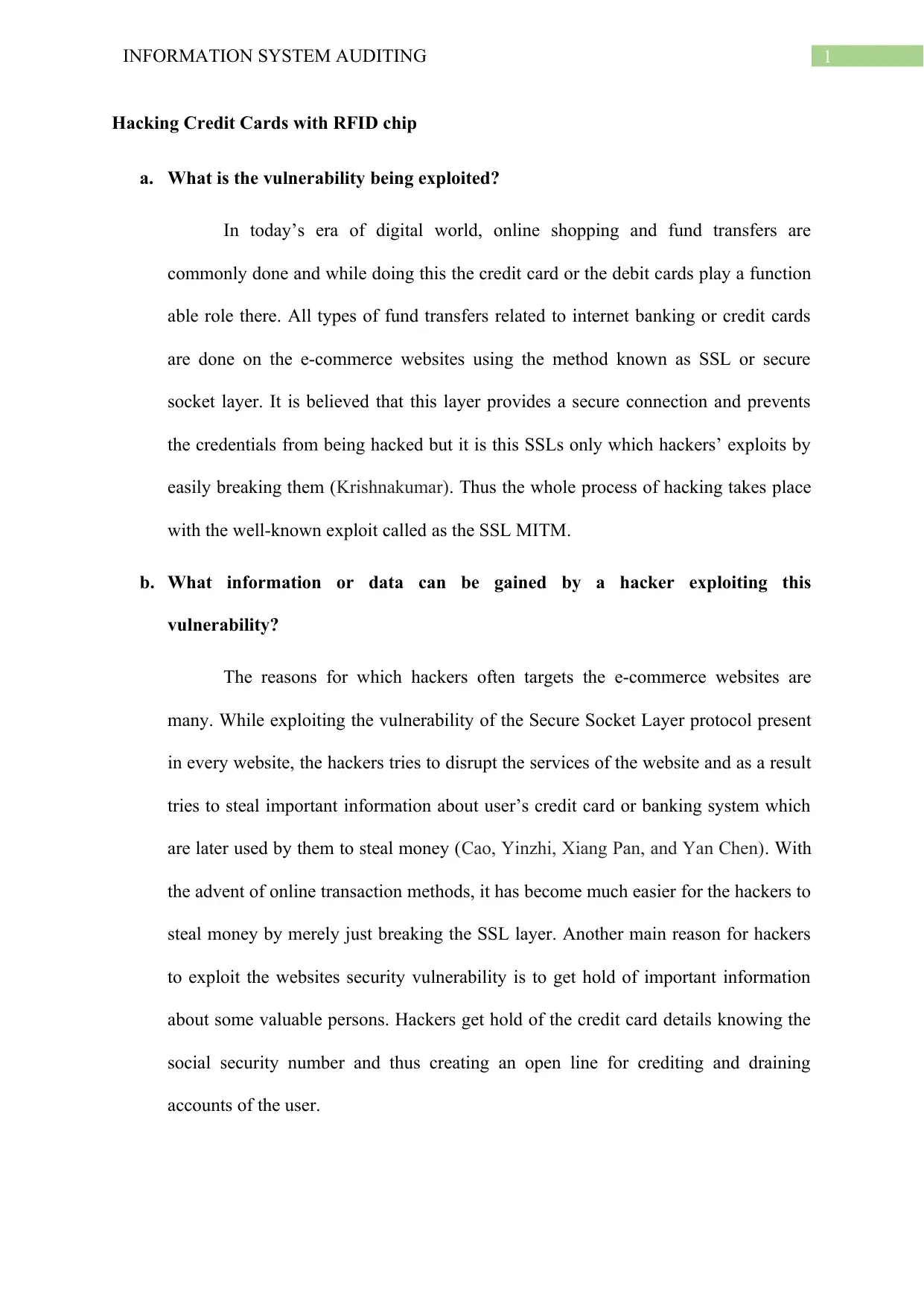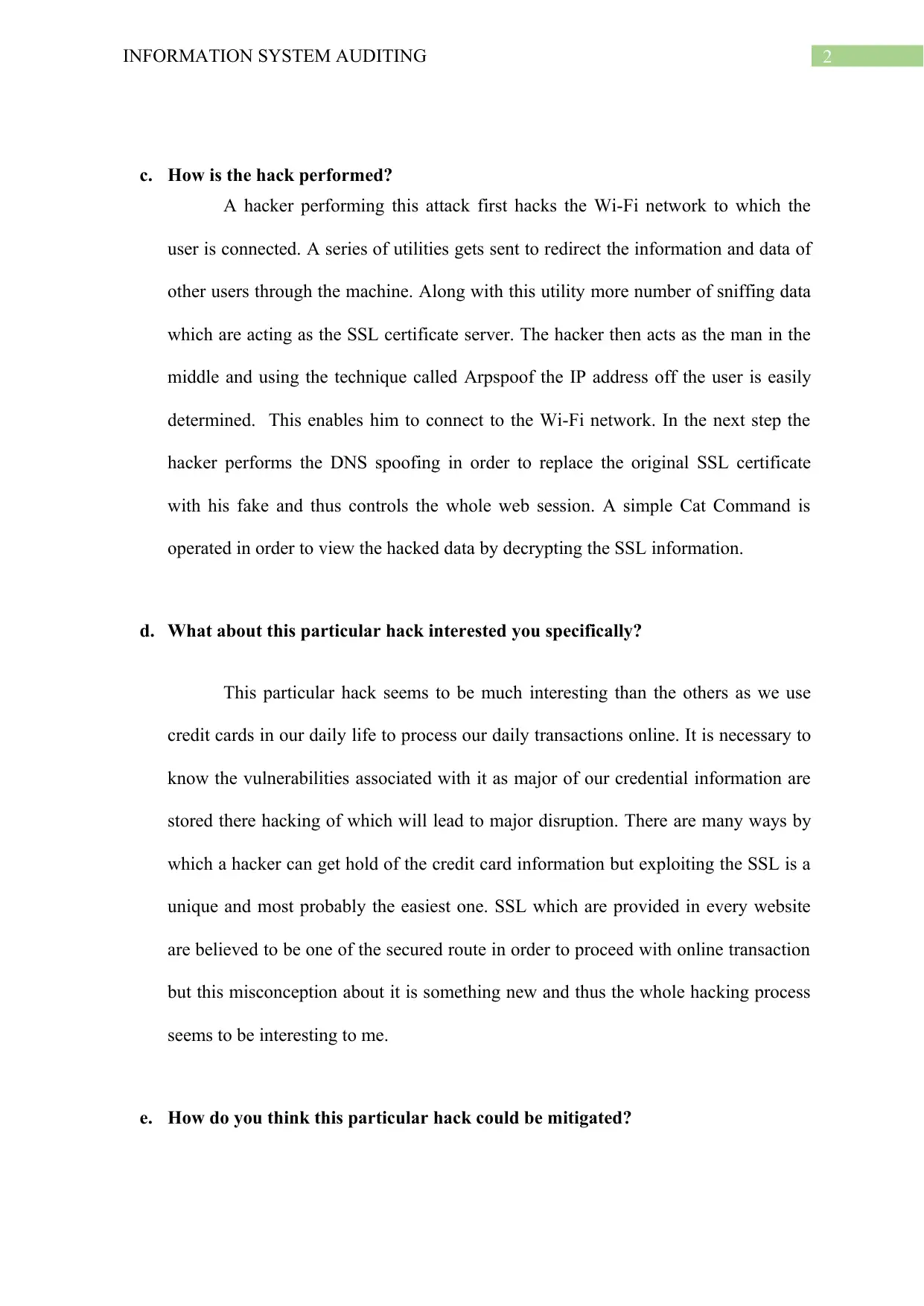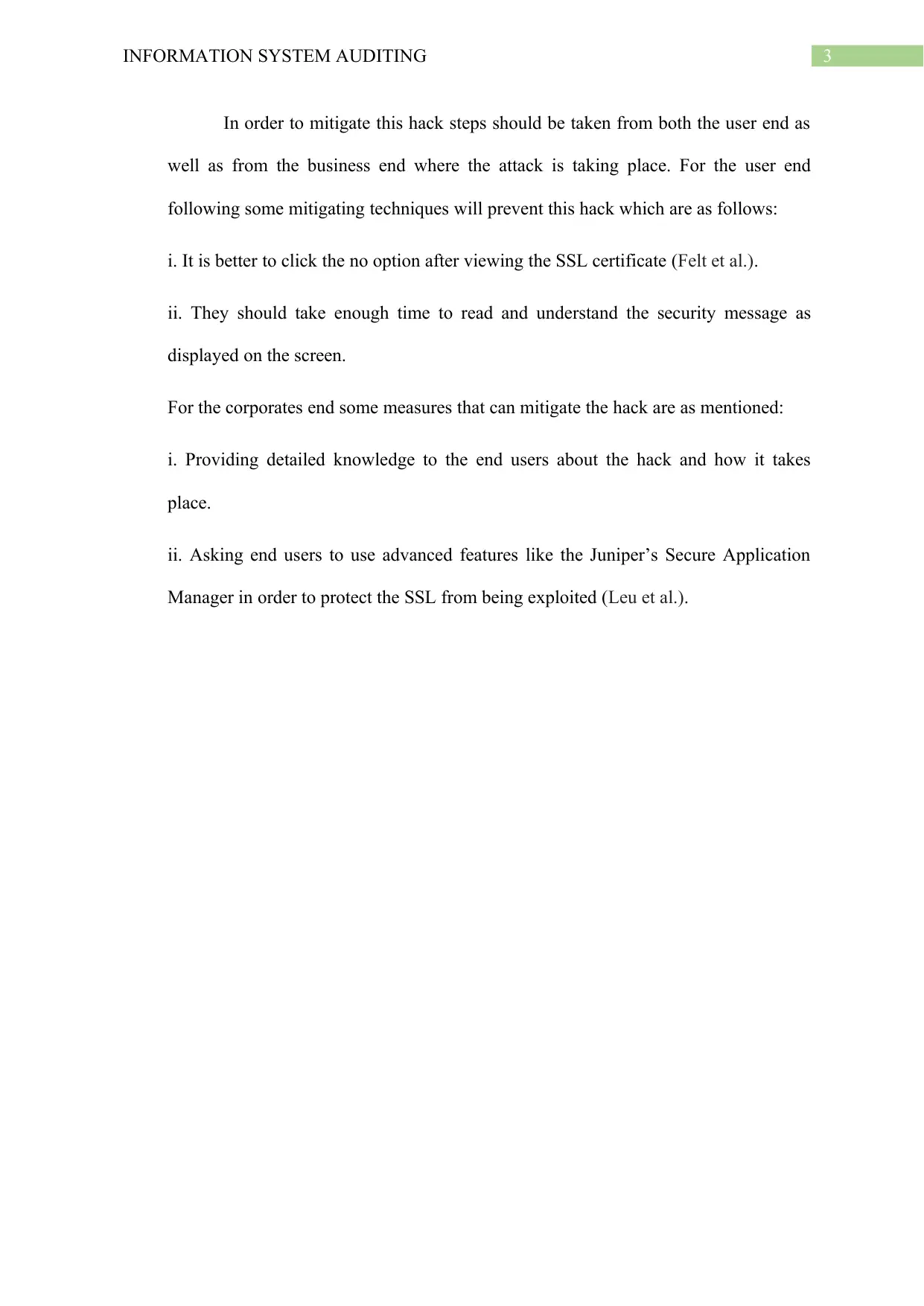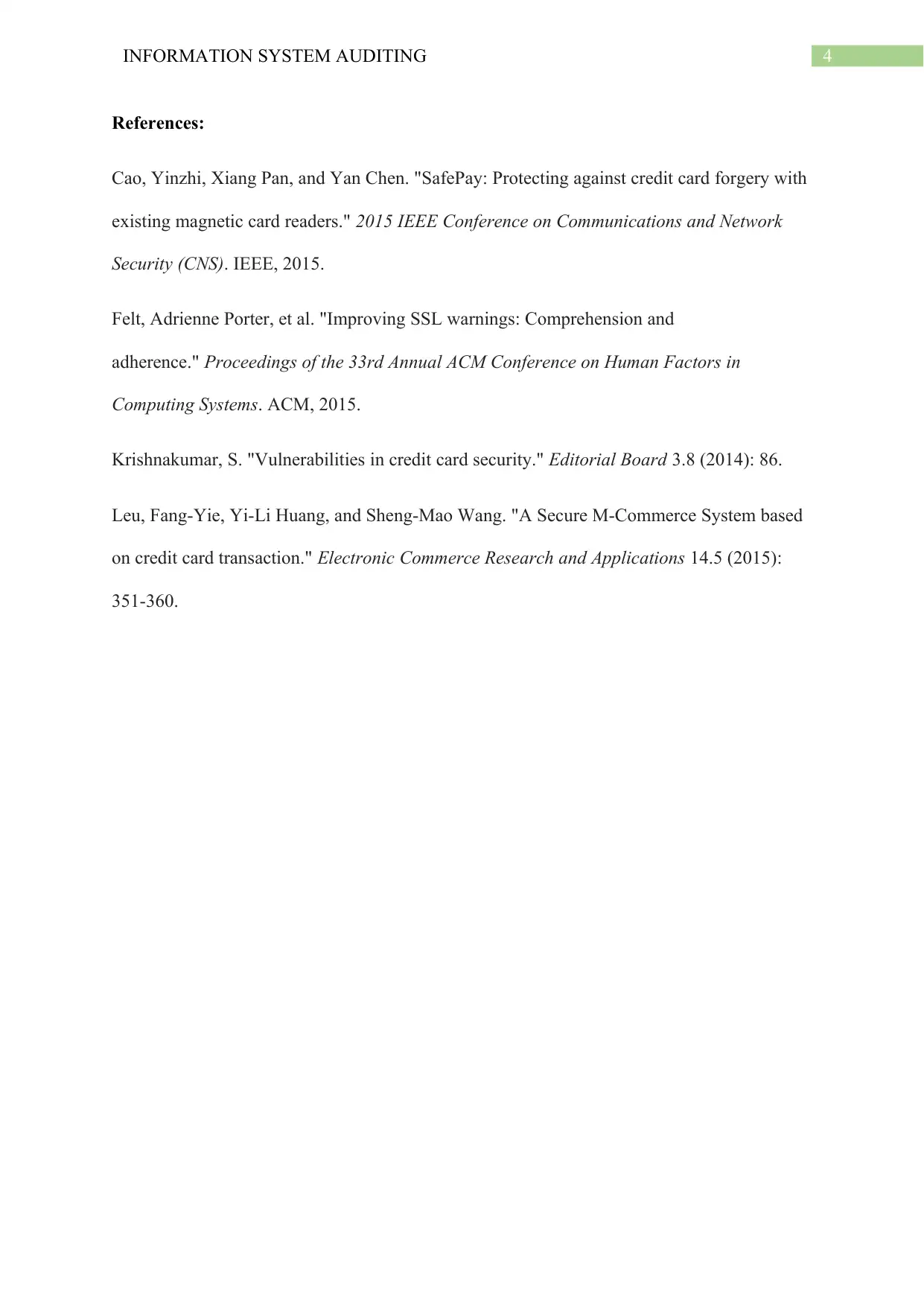CPIS 606 - IS Auditing Assignment 4: Hacking Credit Cards
VerifiedAdded on 2023/04/11
|5
|819
|443
Homework Assignment
AI Summary
This assignment delves into the realm of information system auditing, specifically examining credit card hacking vulnerabilities. It begins by identifying the SSL (Secure Socket Layer) exploit as the primary vulnerability targeted by hackers, detailing how they exploit it through the SSL MITM (Man-in-the-Middle) attack. The assignment then outlines the type of sensitive information and data, such as credit card details, that hackers can gain, emphasizing the potential for financial theft and identity compromise. It proceeds to explain the methodology of the hack, including Wi-Fi network compromise, redirection of data, and DNS spoofing to replace SSL certificates, and the use of tools such as Arpspoof and Cat Command. The student's interest in this particular hack is rooted in the widespread use of credit cards and the misconception about SSL security. The assignment concludes by proposing mitigation strategies from both the user's and corporate's perspectives, including careful inspection of SSL certificates and the implementation of advanced security features. The assignment is supported by references to relevant research papers.
1 out of 5











![[object Object]](/_next/static/media/star-bottom.7253800d.svg)